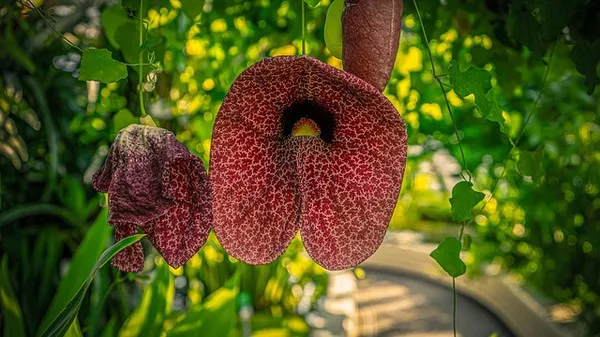As December unfolds, ushering in the festive spirit and marking the culmination of another year, it brings with it a unique and vibrant birth flower—the Poinsettia. While many may associate flowers with the spring and summer months, December’s bloom holds a special place in the hearts of those celebrating birthdays during this winter season. In this article, we delve into the rich history, cultural significance, and botanical features of the Poinsettia, exploring why it stands as the emblematic flower for the month of December.
The Poinsettia: A Botanical Marvel
Euphorbia pulcherrima, commonly known as the Poinsettia, is a species of flowering plant indigenous to Mexico. Revered for its stunning red bracts, often mistaken as petals, this plant belongs to the spurge family, Euphorbiaceae. The vibrant bracts surround the inconspicuous flowers and are the defining feature that makes the Poinsettia an iconic symbol of the holiday season.
The Poinsettia’s association with December is not arbitrary; it aligns perfectly with its natural blooming cycle. In the Northern Hemisphere, Poinsettias naturally bloom in winter, making them an ideal choice for adorning homes and public spaces during the holiday season. The plant’s ability to thrive in cooler temperatures and its striking red hues contribute to its popularity as a symbol of December.
Cultural Significance and History
The Poinsettia has deep-rooted cultural significance, particularly in Mexican folklore. Legend has it that a young girl named Pepita, too poor to provide a gift for the celebration of Jesus’ birthday, gathered weeds from the roadside. Miraculously, these weeds transformed into vibrant red blooms when she placed them at the altar. This miraculous event is said to have inspired the tradition of using Poinsettias in Christmas celebrations.
The association between the Poinsettia and Christmas was further solidified by the actions of Joel Poinsett, the first U.S. ambassador to Mexico, in the early 19th century. Poinsett, an avid botanist, introduced the plant to the United States, cultivating it in his greenhouse in South Carolina. As a result of his efforts, the plant was named after him, immortalizing the connection between the Poinsettia and the holiday season.
In the Victorian language of flowers, the Poinsettia is often associated with celebration and merriment, making it a fitting choice for December birthdays. Its bold red color symbolizes passion and warmth, bringing a touch of vitality to the winter landscape.
Botanical Features
The Poinsettia’s distinctive appearance goes beyond its vivid red bracts. The plant typically reaches a height of one to three feet and features dark green, toothed leaves that complement the vibrant display of bracts. While red is the most traditional and popular color, Poinsettias can also be found in shades of pink, white, and even marbled varieties.
Contrary to popular belief, the bright red structures are not the flowers themselves but modified leaves, or bracts, that serve to attract pollinators. The actual flowers, small and yellowish-green, are nestled in the center of these showy bracts. The Poinsettia’s unique structure makes it a visually striking and captivating addition to festive decorations.
See Also: What Flower Represents Rebirth?A Closer Look
Care and Symbolism
Caring for Poinsettias requires attention to detail, especially considering their seasonal significance. To ensure their longevity, it’s essential to place them in well-lit areas but away from drafts and extreme temperatures. Additionally, watering should be consistent, avoiding waterlogged soil.
Symbolically, the Poinsettia is often associated with joy, success, and celebration. Its vibrant colors evoke a sense of warmth and festivity, making it an ideal choice for both seasonal decor and as a gift to mark December birthdays. As with any symbol, interpretations may vary, but the Poinsettia’s ability to brighten spaces aligns seamlessly with the joyful spirit of the holiday season.
Conclusion
In conclusion, the Poinsettia stands as a botanical marvel and a symbol of joy, celebration, and warmth during the month of December. Its rich cultural history, deep-rooted symbolism, and vibrant appearance make it a fitting choice as the birth flower for this winter month. Whether adorning homes, festive displays, or given as a thoughtful birthday gift, the Poinsettia continues to captivate hearts and minds, bringing a touch of natural beauty to the winter season’s festivities. As we revel in the holiday spirit, let us appreciate the Poinsettia’s enduring charm and the unique role it plays in December’s floral tapestry.


